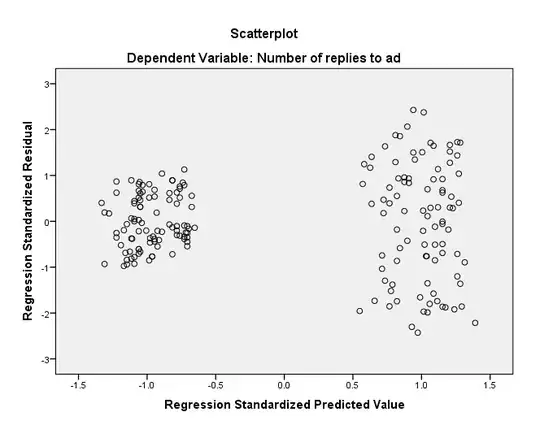It is true that heteroscedasticity reduce your power (see: Efficiency of beta estimates with heteroscedasticity), but it can also inflate type I errors. Consider the following simulation (coded in R):
set.seed(1044) # this makes the example exactly reproducible
b0 = 10 # these are the true values of the intercept
b1 = 0 # & the slope
x = rep(c(0, 2, 4), each=10) # these are the X values
hetero.p.vector = vector(length=10000) # these vectors are to store the results
homo.p.vector = vector(length=10000) # of the simulation
for(i in 1:10000){ # I simulate this 10k times
y.homo = b0 + b1*x + rnorm(30, mean=0, sd=1) # these are the homoscedastic y's
y.x0 = b0 + b1*0 + rnorm(10, mean=0, sd=1) # these are the heteroscedastic y's
y.x2 = b0 + b1*2 + rnorm(10, mean=0, sd=2) # (notice the SDs of the error
y.x4 = b0 + b1*4 + rnorm(10, mean=0, sd=4) # term goes from 1 to 4)
y.hetero = c(y.x0, y.x2, y.x4)
homo.model = lm(y.homo~x) # here I fit 2 models & get the
hetero.model = lm(y.hetero~x) # p-values
homo.p.vector[i] = summary(homo.model)$coefficients[2,4]
hetero.p.vector[i] = summary(hetero.model)$coefficients[2,4]
}
mean(homo.p.vector<.05) # there are ~5% type I errors in the homoscedastic case
# 0.049 # (as there should be)
mean(hetero.p.vector<.05) # but there are ~8% type I errors w/ heteroscedasticity
# 0.0804
Linear models (such as multiple regression), tend to be fairly robust, though. In general, a rule of thumb is that you are OK as long as the largest variance is not more than four times the lowest variance. This is a rule of thumb, so that should be taken for what it's worth. However, notice that in the simulation above, in the heteroscedastic model, the highest variance is $16\times$ the smallest variance ($4^2=16$, vs $1^2 = 1$) and the resulting type I error rate is $8\%$ instead of $5\%$.
